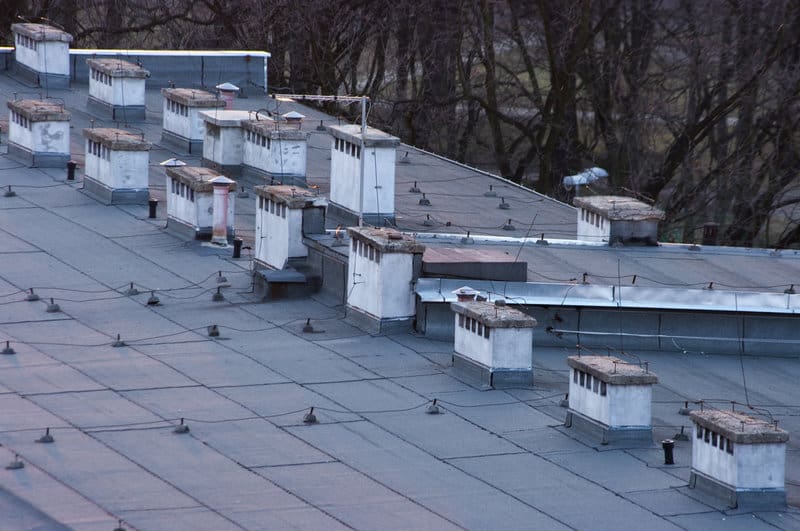-

Choosing for the right roofing for your commercial building can be a daunting task. It’s especially challenging when finding the right materials to combat the environmental hurdles.
For instance, having cold areas in buildings help combat heat fluctuations. This helps in saving energy costs in commercial buildings. Different kinds of doors can help regulate heating as well.
You also need to think about your roof.
Choosing TPO vs PVC Roofing
But what is the most effective roofing for your building? Here are some details to compare TPO vs PVC roofing to help you choose which one works for you.
TPO Roofing
You might be wondering, “What does TPO stand for in roofing?”
The term stands for Thermoplastic Polyolefin, a single-ply reflective roofing membrane. Comprised of polypropylene and ethylene-propylene rubber, these materials are then polymerized together.
The typical installation setup is on a fully-adhered or mechanically-attached system. This setup allows the white membrane to stay exposed throughout the roof’s lifespan.
Pros
TPO roofing is best known for its durability. It’s capable of resisting dirt, bacteria, algae, and even debris build-up.
Due to the flexibility of the membrane, it also has high resistance to blunt damage. It can withstand tearing, punctures, and impact damage too.
Aside from this, it’s also environment-friendly. The reflective capability of TPO also provides a cooling effect for building interiors. TPO polymer doesn’t have chlorine in it and it’s also recyclable.
Cons
There are also some disadvantages that come with TPO roofing. First, TPO is a new material in the market. As such, a lot of manufacturers still aren’t too familiar with developing and improving TPO.
There have been a series of failed attempts with the material. TPO has a history of constant adjustments and improvements. Manufacturers are still working and experimenting on the material for better results.
Difficult welding is another downside. TPO requires an experienced worker to ensure seamless and effective welding.
PVC Roofing
PVC stands for Polyvinyl Chloride. It’s also a single-ply roofing solution used on commercial roofs.
Usually, these get used on flat or low-sloped roofs. The material is the third-most widely-produced synthetic plastic polymer.
Pros
When used for roofing, PVC is possible for prefabrication during the manufacturing phase. This ensures that there’s less scrap wasted at the job site. It also has high flame resistance and is also lightweight.
In other instances, you can see PVC as a good alternative for TPO due to its price. It also has the same reflective properties and is easy to install.
Cons
One downside about PVC is it isn’t environment-friendly. Other countries ban PVC as a building material for roofing or other sections because of this fact. This may be due to the chlorine present in the material, which has negative effects on the environment.
PVC is also prone to shattering when exposed to cold temperatures. It’s also prone to shrinking over time. This makes it a bad choice for people living in places where snow is a constant threat.
TPO vs PVC Roofing: The Verdict
When deciding on which would be the best for your building, consider the location and the budget that you have. When it comes to a durable roof that is also environment-friendly, TPO roofing is a great option.
If you are up for a more chemical resistant roofing and are looking for a cost-friendly option, PVC roofing is the way to go.
Consider what you need for your commercial building’s roofing.
Get Your Durable Roofing Today!
Have you chosen your roofing material yet? Hopefully, this TPO vs PVC roofing guide helps you figure out which one works best for you.
Consider the benefits and the disadvantages that each roofing material has for your building. After considering the environment and the climate alongside your available budget, you should be able to get the right one for your building.
Whichever you choose, we can help you in setting them up on your building. To find out more, contact us now and we’ll help you get started.
TPO vs PVC Roofing: Which Is Better For Commercial Roofs?
Call Us On (510) 521-7334
Your Local Roofers Since 1978
We invite you to contact us today for an estimate on your roofing project.
1814 Clement Avenue Alameda, CA 94501
(510) 521-7334
info@centralbayroofing.comLicense: 435272 Class B, C-39
Site powered by RooferBoost
Copyright 2017 Central Bay Roofing and Restoration | Login
